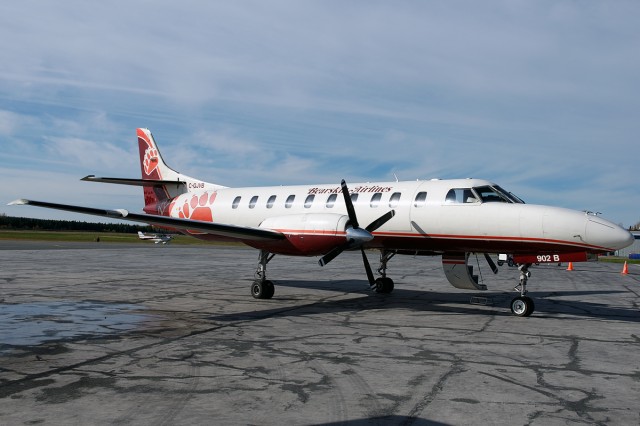
C-GBVY, the Bearskin Airlines Fairchild Metroliner 23 that I flew on. Photo – Bernie Leighton | AirlineReporter.com
This is a continuation of Day of the Turbine (Part 1): Flying on the Convair 580 & Day of the Turbine (Part 2): The Original King Air
The Swearingen Merlin began in a manner akin to the Pacific Airmotive Tradewind. It existed to answer the question, “how can we modernize a Beech piston twin?” By the time Ed Swearingen and his partners had finished their modifications, the aircraft had slowly evolved into its own turbine-powered type. As far as executive aircraft went, the Merlin was relatively popular. It was produced at the Swearingen plant in San Antonio from 1965 until 1998.
The Metroliner came to be as a stretch of the Merlin. It was equipped with the same inverted Garret AiResearch TPE331s, but lengthened to accommodate up to nineteen passengers. Fairchild purchased Swearingen, but continued the Metroliner and Merlin brands. Indeed, they kept production of the Metroliner going until 2001.
C-GJVB, a Metroliner 23, was built in 1998 and I set to take a flight in the classic airliner.
Today the airline operating GJVB is Bearskin Airlines, based at both Thunder Bay and Sioux Lookout airports. Bearskin, an all-Metroliner airline, operates sixteen of the type. They primarily operate around Ontario, in to eastern Manitoba, and sometimes (like my flight) into western Quebec. The pilots also told me that they do charter work all across Canada – and sometimes even flights for Canadian clients as far south as Florida.
Unlike the other airlines I flew with on Day of the Turbine, they also offer Aeroplan points to better serve Air Canada’s client base that may also make use of them. So, if you need a Metroliner – and trust me if you want a nineteen seat aircraft, you do – call them!
The Metroliner has very high undercarriage, making my traditional boarding shot a challenge as I went up the airstairs. Instead, I almost fell straight into the flight deck, which I did manage to get a photo of!
There is definitely some truth to the colloquial name of this aircraft; “the flying pencil.” It is a very narrow, and long, cabin. Seating is one-one, and in Bearskin’s cabin, very red.
Seat pitch was not as generous as on the Convair, but much more comfortable than the King Air. I would estimate it was about twenty-eight inches. The seats were also filled with current issues of Canadian news magazines, safety cards, and Bearskin’s own magazine, “Bear Country”.
The Metroliner is another small turbine-equipped aircraft with windows that seem to do nothing but distort photos, in both dimension and color. I am really not sure why OEMs of the era designed their aircraft to be so visually challenging- but such is life.
After some deep contemplation, I find the windows to be the Metroliner’s only drawback. Startup is a wonderfully high-pitched affair. The TPE331 engines were designed for helicopters, and as such are direct-drive.
Direct-drive engines are always louder because there is nothing to govern the prop speed in relation to the actual gas turbines. In the case of the TPE331, this creates a sound akin to a jet-powered blender. The Bearskin crew I was speaking to seriously wish that the engines were not direct-drive. According to them, even with a cowl plug and proper propellor positioning, freezing rain can sneak into the compressor. With improper handling, or even during inspection on the ground, the whole engine can be destroyed. I could actually see the compressor blades through the cowl, a rarity on turbine engines. They also act as a veritable vacuum for any foreign objects on the ramp. They may provide a lot of power, but at a fairly dear maintenance cost.
Taxi was very smooth, even with the thin undercarriage legs. We then had to hold short while C-FWRM, the King Air we had just arrived on, departed. Takeoff was more like a Dash-8 than a Convair 580. Smooth, yet extremely precise.
Our flight to Timmins, Ontario was done VFR at altitudes under 4500 feet. We were redlining the engines and going at about 248kts. Any faster and the engines would actually overspeed and damage the airframe. During the flight, a fellow enthusiast attempted to get up and take some cabin photos. The flight crew, using this as training and aware that most of us were industry professionals, decided to use this as an opportunity to induce some unusual attitudes to coax him back to his seat. This drew much laughter from the cabin.
Then again, when the pilots asked if we had any requests — I requested that we fly along the tree tops at full throttle. The captain, though a fan of bad ideas, informed us that all of these were not possible.
By early afternoon, a low pressure area had began to work its way into eastern Ontario and western Quebec and things were starting to get a little bumpy. I know I use this term a lot for smaller aircraft, but the Metroliner is very stiff in turbulence. Nothing really flexes or bends. It is not an uncomfortable motion, it just feels more like fighter jet or a race car than a 777.
Our descent into Timmins was abrupt – intentionally so. There was not much distance to cover. In Timmins we would execute a full-stop landing, taxi past the Air Creebec hangar, and go back to Rouyn-Naranda.
On final, we had crabbed into the crosswind and proceeded on a surprisingly-smooth landing. There were no shimmies or vibrations; things seemed to stay perfectly centered.
The takeoff to Rouyn-Naranda was definitely more turbulent; the aircraft seemed to bounce left and right as the pilots corrected for most of the flight. It was quite a lot of fun – the Metroliner is my kind of aircraft. Upon landing, it was time to gather everyone up and get back on the Convair to head back to Mirabel- I will cover that and the remainder of the Nolinor Saga in the next installment.
While I am unclear how much of the experience was the result of our pilots being the veritable tip of the Metroliner spear in terms of skill, it is a wonderfully loud, yet smooth aircraft. There is even a water-inject option available on the engines for higher gross-weight takeoffs. I’d love to be onboard when that is in use.
Comments are closed here.
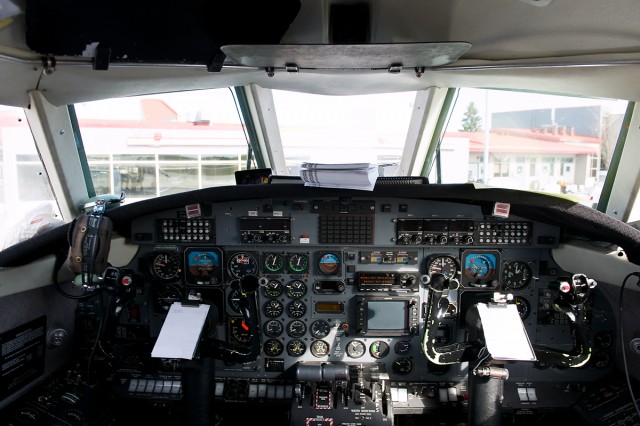
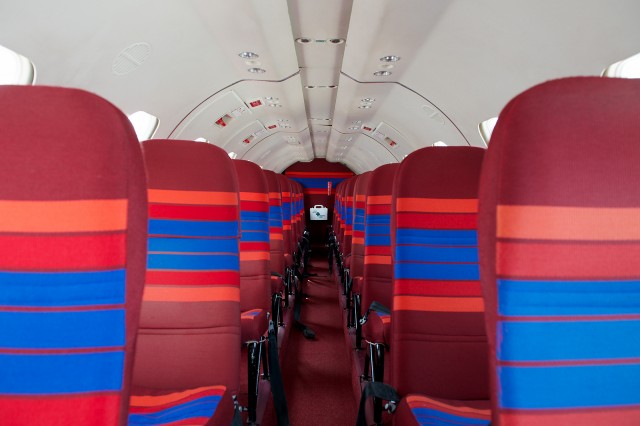
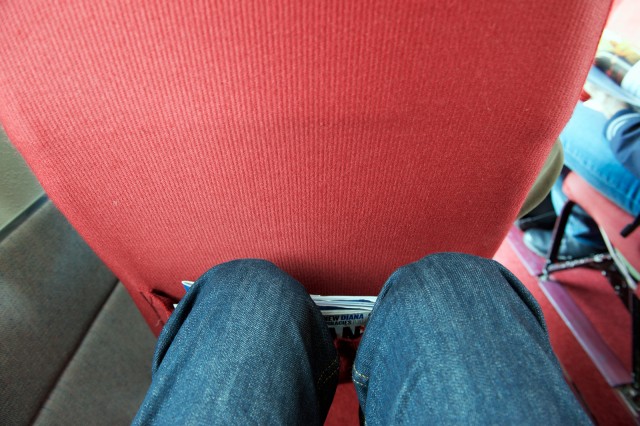
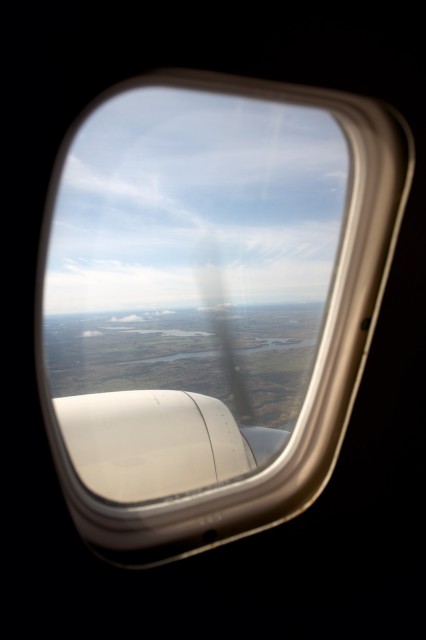
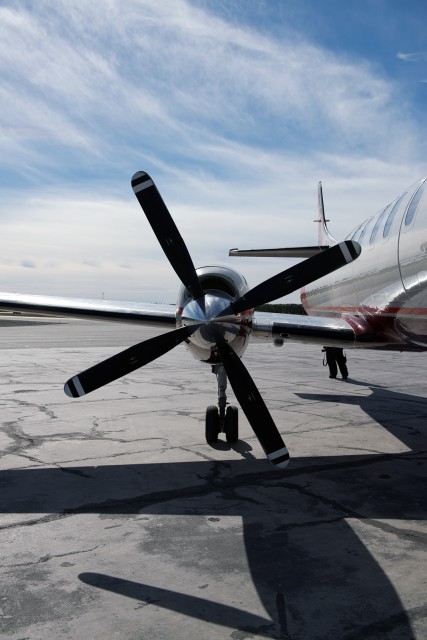
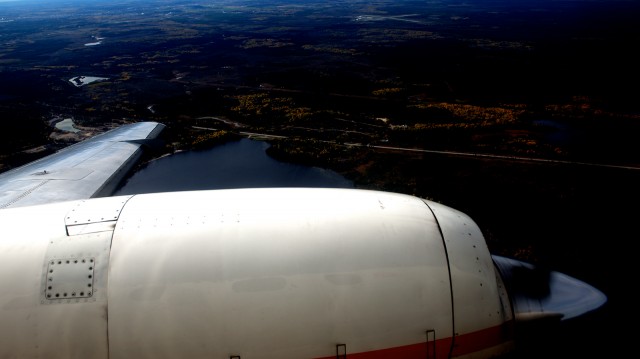
Let the Bear take you there!
Wings West Airlines was the American Eagle carrier in California and I worked for them in SBP. Many flights taken between SBP-LAX and back on Metro III and I absolutly love the aircraft. Fast and smooth. A couple little bumps over Santa Ynez and then smooth again. With it’s high undercarriage and thin cabin it always felt like flying on a mosquito.
Your articles regarding turbine aircraft are very interesting. They bring back memories as I used to fly in the Northwest CV580 and Britt Metroliners out of ORD way back when. However,I just wanted to let you know that the correct spelling for Rouyn-Naranda is Rouyn-Noranda!
Seeing this article brings back memories to my childhood in the pacific northwest. This aircraft used to be the backbone of the Horizon Air fleet, and I spent many a flight in the region on one of these. Always preferred the flights on the Dash 8 100’s, but enjoyed my time on these (you got both the aisle and the window!).
Hey Ben,
I have very similar memories of the QX Metroliners as well! Anytime I picture one in my head, it is in that livery.
David
I flew JV last year from Ottawa to Waterloo (C-FYAG). I had long been tempted by the Metroliner at YOW, so I convinced my wife to pick me up at Waterloo, rather than the much closer Pearson to pick me up. I loved the ledge along the window – the best arm rest I have had on a plane!!
Glad you went up to the Abitibi – Go Huskies!
Thanks for this superb review. I didn´t have the opportunity to go on a Metroliner, because here in Germany and Europe they are very rare. But the plane caught my interest everytime I was in the US for Holidays. Most interesting details for me was the fact that it uses TPE331 engines designed for helicopters (direct-drive) incl. water injection. It must be a terrific sound! Did you fly the Saab 2000 for comparion? I did that a few years ago – it was really fast and smooth to fly on.
Greetings from Germany
Uwe
Another of Bearskin Airlines’ Metros crashed at Red Lake, Ontario, on Sunday. 5 were killed and 2 survived. The story is on World Airline News.